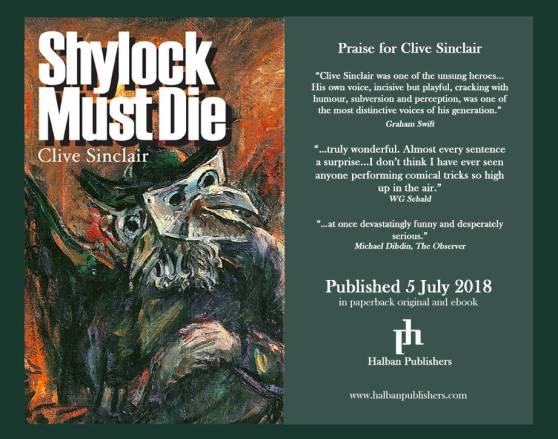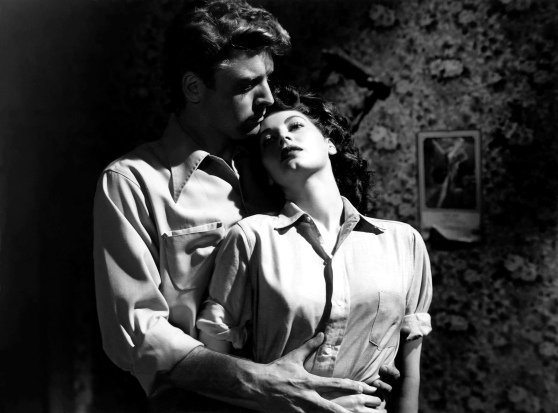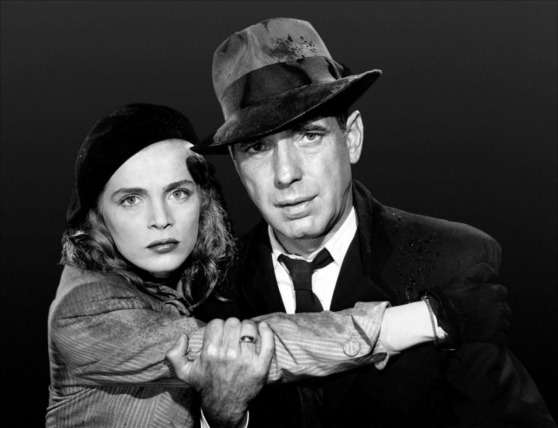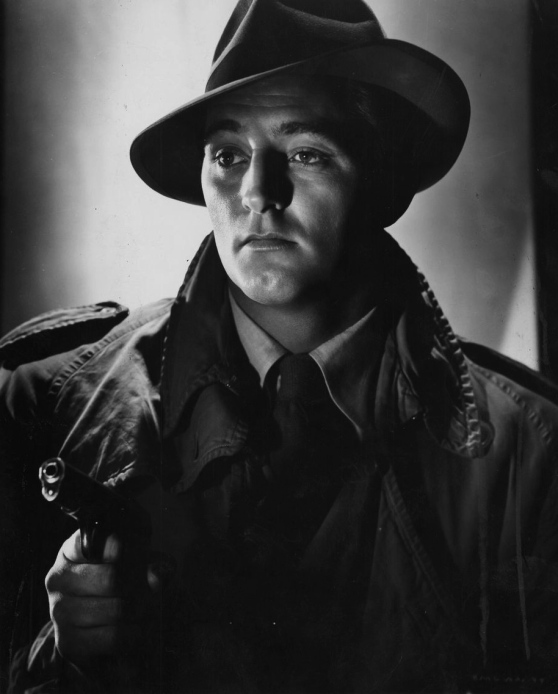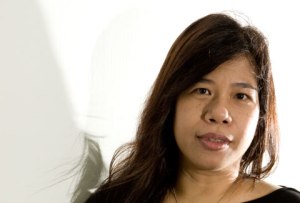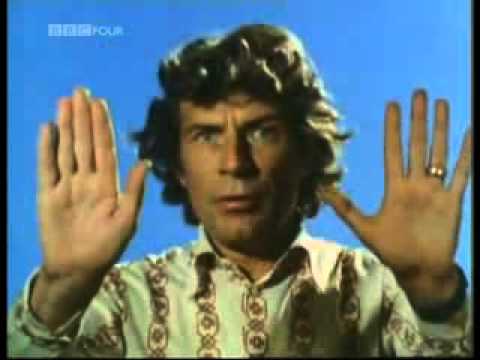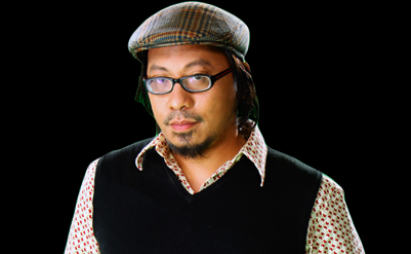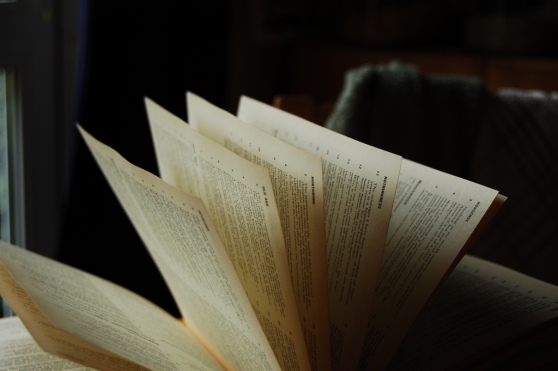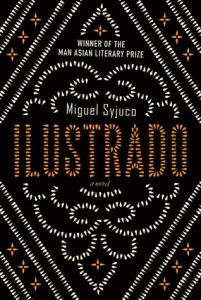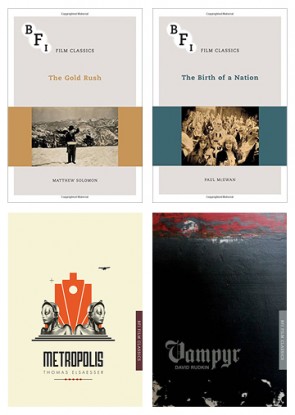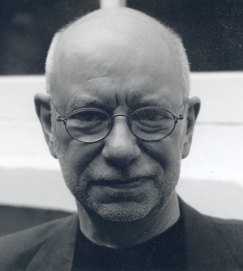
AN INTERVIEW WITH CLIVE SINCLAIR
Matthew Asprey Gear
Clive Sinclair was born in England in 1948. He is a recipient of the Somerset Maugham Award, the Jewish Quarterly Prize, and the Macmillan Silver Pen Award for Fiction. He holds a doctorate from the University of East Anglia and is a Fellow of the Royal Society of Literature.
Sinclair’s novels include Blood Libels (1986), Cosmetic Effects (1989), and Meet the Wife (2002); his stories have been collected in Hearts of Gold (1979), Bedbugs (1982), and Lady with the Laptop (1996). Sinclair’s most recent books are True Tales of the Wild West (2008), an experiment in the new genre of ‘dodgy realism’, and Death & Texas (2014), a fourth collection of stories.
The following interview is based on a transcript of a long conversation at Sinclair’s home in London in early 2011. More than a year later the raw transcript was edited and supplemented by further questions conducted by email. An initial version was published as ‘El Hombre Valeroso’ online at the Los Angeles Review of Books and in print in Contrappasso #2 in 2012. In 2016 Clive Sinclair and Matthew Asprey Gear revisited and expanded the interview to create this final, definitive text that will soon appear as a limited edition chapbook.
*
MATTHEW ASPREY GEAR: The first book you published was Bibliosexuality (1973). It’s a very obscure title. I’ve never seen a copy. Do you want to tell me anything about it?
CLIVE SINCLAIR: I’d rather not but, since I can see the thumbscrews bulging in your pockets I’ll oblige … The title is a neologism, of which I remain rather proud, and look forward to one day seeing housed in the OED. Bibliosexuality describes a disorder of the senses in which a perverse relationship with a book is not only desired, but also achieved. In short, the novel offered the world of letters as a substitute for the real thing. The main influence on it would be my time at the University of East Anglia, where I encountered the likes of Malcolm Bradbury, Angus Wilson, Jonathan Raban, and the Sages—Lorna and Victor. I had no idea what I was getting into. I went there in a completely arbitrary fashion, and as a complete innocent. The aforementioned practised what was then called New Criticism, which insisted that the text be examined as an artefact entire unto itself. The very opposite of structuralism, unknown (at least to me) at the time. You—the critic—ask about the author’s intentions and intentionality. For example, that yellow vase on the shelf. Why yellow? You assume everything is there for an artistic purpose. The book that I produced as a consequence was immensely self-conscious. Of course it was heavily influenced by Nabokov. It was full of linguistic resonance and also the sex element, to put it roughly. Portnoy’s Complaint had just come out in ’69. So it was a mishmash of influences. It could have been brilliant. It wasn’t, but it could have been.
How old were you?
Twenty-one when I wrote it. The only part of it I would now preserve is the mock-scholarly appendix called ‘St John’s Complaint’, which purported to be a theory of literature. Now I can confess that it was also wishful thinking, since it posited the author as an ace seducer. The working model was the Gothic Novel, in which a monster in human form typically attempts to condition reality in such a way that a triple climax is magicked: sexual, dramatic, and sublime. Nabokov was one of the people I quoted in pursuit of my argument. It was an extremely obscure quote, recently recalled (so I read) in a book by Eric Naiman called Nabokov, Perversely. It goes something like this: “The book I make is a subjective and specific affair. I have no purpose at all when composing my stuff except to compose it. I work hard, I work long, on a body of words until it grants me complete possession and pleasure. If the reader has to work in his turn—so much the better. Art is difficult.” And also sexy.
There’s a very Nabokovian story in your collection Hearts of Gold (1979).
Yes, ‘Uncle Vlad’, the first short story I ever wrote. I remember rushing round to my friend Judith—a smart girl—to get her reaction as soon as it was done. She approved, and I was on my way. Its main character is a butterfly collector who is also a vampire. The narrator is his nephew, who has no idea that vampirism is unnatural. A cruel dinner party serves as its climax, during the course of which crepes aux papillions are served. As well as making my name this story also introduced me to Yosl Bergner, the Israeli artist, who just happened to have produced a canvas in which a family tucks into a plate of butterflies. I’m not so sure about Nabokov these days, but Yosl remains a great painter, and a great friend. Incidentally, another of his forenames is Vladimir (after Lenin). So he has become, over the years, a second Uncle Vlad.
Has Bibliosexuality ever been republished?
Good God, no.
You wouldn’t allow it?
In the brief period when I had the opportunity to republish it? No, no, no. The general belief is that my first book is Hearts of Gold. And that’s fine.
You’re not the only one who had early books they wished forgotten. There was a story that Graham Greene would buy up all the secondhand copies of his earliest novels to destroy them.
Well, I only hope that he rises from his grave and bites the people who’ve remade Brighton Rock.
So in the early days your short stories appeared in journals and magazines before they were published in book form.
I finished Bibliosexuality in ’71, and it came out in ’73. I received a hundred and fifty pounds advance from Alison & Busby. Clearly it was going to lead nowhere. But I was determined to be a writer, so I started writing short stories. The truth is I’ve always been a short story writer rather than a novelist. Bibliosexuality was originally a collection of short stories about a certain David Drollkind. Margaret Busby said she would publish it, if I could find a way of linking them. That’s how it became a novel. So I began, as you said, trying to sell stories individually. In those days there were numerous small magazines, and you could send them stuff, which either got returned in a self-addressed envelope or accepted. Eventually I found a mentor of sorts, Anthony Thwaite, who at that time was literary editor of the magazine Encounter, which unbeknownst to me was a CIA front. But it wouldn’t have made any difference—they wanted to publish me! If Der Stürmer wanted to publish me I’d have considered it, so desperate was I to be published. But anyway, Thwaite started publishing my stuff and it was quite brave of him in a way, if anyone in our small world can be spoken of as brave. I mean, he wasn’t going to be beheaded. But some of his readers were offended by the rudeness of my stories. He published them on a regular basis and this was a huge help. An even bigger boost would have been the existence of a pulp fiction culture over here. That would have been the ideal way to learn the trade, as Elmore Leonard did—you’re working all the time, you have the reward of seeing your work in print, but it’s utterly disposable. That’s how you learn to be Raymond Chandler—or Elmore Leonard—or, better yet, yourself.
That’s a pity. I imagine you would have enjoyed writing Westerns. We see that interest not only in Clive Sinclair’s True Tales of the Wild West (2008). There’s a John Ford-type director in Cosmetic Effects (1989).
Mostly John Ford, but also a little bit of Howard Hawks. Hence the name Lewis Falcon. My first American car—which I purchased when I went to California in 1969—was a Ford Falcon, and a falcon—like a hawk—is a kind of raptor. The Lewis, incidentally, is a little nod towards Bunuel. And, yes, I’ve always adored Westerns, ever since my father took me to see my first one in the 1950s.
Which other writers did you value early on?
Neither of my parents went to university, but we had bookshelves in the house, and even books to fill them. As a matter of fact my father would have gone to university, had his immigrant father not been forced to make a living by selling second-hand shoes off a hand-cart. And my mother was always taking me to the public library in Mill Hill, after she picked me up from my primary school. I don’t remember how I discovered Rider Haggard, but once I did I rejoiced whenever an unknown title appeared on the shelves. Reviewing Lionel Davidson’s The Rose of Tibet, Graham Greene said he hadn’t realized how much he had missed the genuine Adventure story. So imagine what it was like to discover them for the first time. Later I began to borrow my father’s books, the most significant of which was Budd Schulberg’s The Disenchanted. This in turn led to the collected works of Scott Fitzgerald, and a switch from lost horizons to lost love. Soon I began to augment these borrowed volumes with Penguins I purchased randomly at the bookshop—WH Smith & Sons—which sat conveniently between my house and Hendon Central station. Sometimes my choice was directed by the jacket or the blurb; at other times by reviews in the Observer. A rave alerted me to Saul Bellow’s Herzog. This opened my eyes to that secular yeshiva known as Jewish-American literature, and its other patriarchs; Malamud, Roth, and Mailer. Who knew that the stuff that went on in my home, not to mention the stuff that went on in my brain, could also be the stuff of literature? At the same time I was strongly attracted to books that touched upon more forbidden things. I mean the gothic tradition, with its outrageous glories: The Monk, Dracula, and Frankenstein. It never occurred to me that all of the above was anything more than outlaw literature. To discover otherwise at UEA, to discover that it could be the subject of serious study, was akin to a revelation. My time at UEA was in reality an apprenticeship. For better or worse I left fit for nothing but writing. And this is not to be confused with the creative writing courses, which came much later. This was the straight English & American Studies course.
Did your relationship with UEA terminate on graduation?
Not exactly. My younger brother studied there in the early 70s, and my son in the late 90s. As for myself … Well, I returned in 1977 to complete a doctorate begun in Santa Cruz and tinkered with at Exeter. That was when I met Angela Carter, who introduced me to my first literary agent, Deborah Rogers. Kazuo Ishiguro was taking the MA in Creative Writing at the time. I still remember some advice Angela gave me. Ish is going to be a star, she said, try not to be envious. I wasn’t adverse to issuing the odd prescription myself. Don’t write off your USP, I said to Ishiguro, think Japanese. Not bad advice. Having been dubbed Dr Sinclair I taught courses on a part-time basis at UEA; on Shakespeare, gothic fiction, detective fiction, Jewish fiction, and I don’t remember what else. Later still I returned for three years as a Royal Literary Fund Fellow, on a mission to instruct native speakers how to construct sentences and build arguments.
Presumably it was at UEA that you met W. G. Sebald.
It must have been in the late 1980s that I received an invitation from a Professor Sebald (a name then unknown to me) to address his seminar on Holocaust Literature in Norwich. He asked me if I could talk about David Grossman’s See Under: Love, which I had recently reviewed for the Independent. Although the seminar was not a great success we bonded over dinner afterwards, perhaps because we were both what you might call Bulgarian optimists. The Bulgarian pessimist says, ‘Oy, things are so bad they cannot possibly get any worse’, to which the Bulgarian optimist replies, ‘Oh yes they can’.
Despite being long domiciled in Norfolk, Max’s un-English moustache advertised his continental origins. In fact, he was born in a Bavarian village in a bleak year. It was during his schooldays at Oberstdorf that he first became acquainted with his nation’s crime against the Jews, when his class was abruptly shown a newsreel about Belsen. It was presented and received in silence, a silence to which Max felt morally obligated to respond. At the time I assumed his response was primarily through academic means, such as the Holocaust seminar.
After that we met for lunch whenever I was in Norwich. We both liked to belly-ache. He belly-ached about the increasing vicissitudes of academic life, while I belly-ached about the writer’s lot. It was not until George Steiner chose Schwindel. Geruhle by a certain W. G. Sebald (Max was a diminutive of Winfried Georg Maximillian) as one of his International Books of the Year for the TLS that I had any inkling of my friend’s secret life. Yes, he confessed, he was that man, he was a writer too. It was a vocation (I soon learned) that occasioned much anguish, always expressed with the self-deprecation of a true Bulgarian optimist.

W. G. Sebald
Do you have a favourite amongst his books?
That’s a hard call. Perhaps The Rings of Saturn, because its controlling metaphor exerts a gravitational pull on the entire oeuvre. The book itself is a record of a peregrination around Suffolk undertaken in 1992. So what has this to do with the outskirts of a planet light years away? Well, it seems that Saturn’s rings are the debris of a decayed moon, now spinning silently in the void. It is, the reader understands, the promised end of all endeavour. But debris can also be deciphered and reconstructed, if only out of words. That is the task Sebald set himself, both in Suffolk and among the ashes of Europe. This was surely a task only a Bulgarian optimist would contemplate. And Max was that man par excellence. I only wish I could fully reconstruct our last meeting, which took place in the Senior Common Room at UEA. Max had recently returned from a trip to Europe, which involved a change of trains. Having disembarked my friend noticed on the same platform a colleague, a Professor of Chemistry (or something similar), whom he had never previously addressed. He thought it would be rude not to at least acknowledge the unlikely coincidence of two colleagues waiting for the same train on the platform of an obscure station in the middle of nowhere. There followed an exchange that caused Max to roar with laughter as he retold it. As a final memory it would be perfect, if only I could remember his words.
I believe you shared the 1997 Jewish Quarterly Award for Fiction; he for The Emigrants, you for The Lady with the Laptop.
Yep. Someone leaked the fact that I was on the shortlist. Then I heard that Max was too. Naturally, I kissed the prize goodbye. But a Judgment of Solomon was made, and the prize divided. Afterwards one of the judges told me that she thought Max should have won outright, so I can only assume that another of the judges argued the opposite with equal fortitude. Of course I would have voted for The Emigrants. A few summers ago I was invited to lead a creative writing workshop in Jerusalem. I selected three stories to discuss: Milan Kundera’s ‘The Hitchhiking Game’; Poe’s ‘The Fall of the House of Usher’; and the first story from The Emigrants, ‘Dr Henry Selwyn’. Accustomed to regarding Max’s stories as a delicate weave of memory, history, and fiction, it came as something of a shock to recognize the unmistakable ties between Roderick Usher’s dwelling, and that of Dr Henry Selwyn. How had I missed them? By concentrating on the tale’s philosophical aspects, and forgetting the tenets of New Criticism, that’s how! I had once sent Max a postcard I knew he would love. It depicted Goya’s etching of a perplexed donkey seated at a desk and staring at the open text resting on it. I was right. Max pinned it to his office door. I should pin it to mine too.
After your early books of fiction you published a non-fiction study on The Brothers Singer in 1983.
Yes. As a matter of fact it was my doctoral thesis. Isaac Bashevis Singer was someone else I read extra-curricular and enjoyed. Through him I came across his brother, Israel Joshua—hence the title—who wrote more traditional novels, such as The Brothers Ashkenazi, in which families—and cities—rise and fall. He was much concerned with social justice, something his younger brother gave up on very early. His subject was more the society of the soul.
Does he remain high in your estimation?
Oh yes. I interviewed him in 1978, and still stick to the rule he gave me then: Never begin a story until you are convinced that you are the only person who can write it. Certainly, there’s no mistaking a Singer story. On the whole I rate the stories more highly than the novels. Not that there aren’t some great novels, especially The Slave.
How about Enemies?
Yes, Enemies is good. But I would say that, having written the introduction to the Penguin edition.
Was Kafka important to you?
Are you kidding? I even flew to Israel one time, just to meet his Hebrew teacher, Puah Ben Tovim. Kafka was tall, you know—so was Singer, incidentally—a fait accompli he did his best to hide by always walking with his head bowed. Or so his Hebrew teacher said. Anyway, you are talking to someone who spoke to someone who spoke to Kafka. His stories made a great impression upon me, with their microscopic focus, and their single-minded pursuit of a particular image or a singular metaphor. The one story of mine where the feel is most Kafkaesque is ‘Bedbugs’. The whole plot unfolds from the single image that opens the story. And I guess the intensity of that experience is something I’d like to emulate. I haven’t given up yet.
And Borges?
Borges was another revelation. I heard him speak at the Institute of Contemporary Arts back in the early ‘70s. And of course I read every word that I could geat my hands on. Parts of Bibliosexuality are nothing but Borges lite. I still admire him enormously, but no longer try to write like him. These days, if you will, I try to find my own way out of the labyrinth.
Your work is particularly cosmopolitan. The second part of Meet The Wife (2002) is set in San Francisco. Did you live there?
Not quite. More like Santa Cruz, some 80 miles to the south. I was first there as a student in 1969-1970, missing the summer of love by a year, though I did meet A, midwife to my writing career. A decade later, and I was back again thanks to a Bicentennial Arts Fellowship, fall out from the success of Hearts of Gold. For five years the British government paid creative types like me to live in the USA for twelve months and a day. We were wampum to the natives, gifts to the American people in honour of their Bicentennial. By the time we left Bury St Edmunds—where I was working on my doctorate—my wife, Fran (a contemporary at UEA), was pregnant. So we smuggled our son with us, as it were, in embryo. Lucky thing, he was born in Santa Cruz, and automatically acquired American citizenship. Thanks to Seth I’m an American citizen by reverse adoption. Recently he reclaimed his birthright, and moved to LA with his wife, where they intend to make their names in the Business. As for me, I look upon Santa Cruz as my second home. I’m just not in residence very often, which is a pity, because Santa Cruz is a place where the human and the natural mesh most harmoniously. Looking out of my study window at 225 9th Avenue I once saw a grey whale passing by.
And ‘Las Fiestas de Navidad’, the first story in Lady with a Laptop (1996), is set in Mexico City. I spent quite a bit of time there recently.
I envy you. Over the years I’ve visited most of Mexico. I first drove down when I was a student in 1970, with A among others. We drove thinking we would reach Mexico City. You look at the map, and Mexico looks fairly compact compared to the United States, but when you start driving through it you realise your mistake. On that journey we got as far as Guadalajara, which wasn’t a bad shot at Mexico City. And we drove through some fairly rugged and unknown parts not visited by many tourists. I finally made it to Mexico City in 1990 or ‘91, when I was invited to a conference there. That visit inspired the story you mentioned. Later still I did a little tour of the Yucatan, where I became known as the hombre valeroso, on account of my immunity to the hottest of chipotles.
The violence of the drug war is a disaster.
I hear Juarez is horrible these days.
Three thousand murders in 2010.
In 1970 we crossed the border at Juarez. At Easter time, too, just like in the Dylan song. We were driving the aforementioned Ford Falcon. I had long hair then. The border police on the El Paso side were unbelievable. They just wanted to catch us as drug smugglers. They almost took the car to pieces. Took all the seats out. Let the air out of the tyres. Didn’t find anything, of course. I thought there was something weird about being in Texas. People were slightly alien-looking. I couldn’t figure out why. And then I suddenly realised they had these things protruding from the sides of their head. Ears. I’d been in California and I hadn’t seen ears in months. Times change. Recently I’ve been getting into Texas Swing, thanks to the Hot Club of Cowtown.
And there’s another story in Lady With A Laptop set in Egypt.
Egypt bowled me over. I was only there three or four days, but I absolutely adored the place. I went in the summer of ’94, with my son, and our friend Pamela. It was a difficult time, to say the least: between the death of Fran, and the commencement of my own period as a dialysand. I carry an evil gene—a sort of in-house antisemite—which occasions polycystic kidney disease or PKD—not to be confused with a Palestinian revolutionary cell. Anyway, there was something about Luxor—with its spoilt grandeur—which put me irresistibly in mind of Chekhov. You can guess which story in particular. But I wanted to write it in my own way, and was stuck, until I remembered a character I had met at that conference in Mexico, a Middle Eastern dramatist. As a matter of fact, I had seen him previously in Stockholm, accepting the 1988 Nobel Prize for Literature, on behalf of its winner, Naguib Mahfouz. Anyway, I borrowed his voice—a very distinctive one—and he became my narrator, and my laissez-passer into Egyptian society.
You’ve been called the English Philip Roth.
Let me tell you a little story. Not mine, but one I’ve borrowed from the Hasidim. There was once a man who was constantly measuring himself against others. In the end it got him down, and he sought consolation among the tzadikim, men wiser than he. “Zusya,” said one, “in the world to come they will not ask you: ‘Why were you not more like Moses?’. They will ask you: ‘Why were you not more like Zusya?’.” I think I managed that in a few of my books; got to be more like myself.
Jewish concerns are at the centre of your work.
Another thing that’s in the genes. I grew up in a Jewish area, and in my innocent years thought England was a Jewish country, populated exclusively by Jews, save for a few cleaning ladies. It was safe, but it was very suffocating. As I grew less innocent, I really wanted nothing to do with that world. I was a non-violent resister at Hebrew classes, a Gandhi among the Cohens—I simply refused to learn. Though I must have learned enough to pass my bar mitzvah—a sort of Jewish driving test—but after that I planned to have nothing more to do with Jewishness or Jewish people. How God must have laughed. First I went to East Anglia, where I found myself in a minority of one, and felt myself more Jewish than ever before. Then there was the Six Day Way, which turned me into a Zionist overnight.
To what extent in your life have you been a victim of antisemitism?
Only once directly. Our grammar school was located in a rough area. One afternoon, when walking to Burnt Oak station with my buddies, we passed some goyim loitering outside a shop. “Fucking Jewboys,” was their verdict. Turning around I said, “I beg your pardon?” Whereupon one of the antisemites leapt upon me like some predatory beast, issuing the following war cry: “Did you say, ‘Bollocks’?!” My friends, bless them, kept on walking, without once turning their heads. Perhaps we’d been studying Orpheus and Eurydice in Latin, I don’t recall. Luckily my assailant wasn’t very talented in the fisticuffs department. To my shame I just stood there, without even dropping my briefcase. However, as a supporter of Wingate FC, the only Jewish club in the Football League, I was much more vocal in our defense, especially when we played the dread Cray Wanderers. At university, some upper class kid in a bar said: “We don’t have any money—is there a Jew around, so we can borrow some?” And then they looked around and saw me and, were incredibly embarrassed and apologized. If you ask me, antisemitism in England is very overrated.
I remember reading a section of Philip Roth’s The Counterlife set in England. He lived here, I think.
At that time—the mid 80s—I was literary editor of the Jewish Chronicle. We hung out a bit, though I was more acolyte than friend. We had numerous lunches without incident, but in one of his books—perhaps Deception—he describes a visit to a restaurant, when he overhears an upper class woman at a nearby table demand of the waiter: “Open the window—I can smell a Jew.”
Did that strike you as unbelievable?
Well, maybe it happened. But it just shows he was going to the wrong restaurants, or mixing with the wrong set. On the other hand, I don’t want to deny the undercurrents …
Let’s talk about your 1985 novel Blood Libels.
Well, it’s not a friendly book. It does not deal kindly with either the Anglo-Jews or the Anglos who accommodate them. In fact it sets the one upon the other. This may seem to contradict what I have already said, but the novel is a fantasy, a vision of what could happen in the land that—albeit long ago—first gave the world the idea of the blood libel. Let me remind you that when I first went to Norwich in 1966, its cathedral still displayed a brass plaque commemorating the murder of little William in 1144, supposedly at the hands of Jews. Like me, the book’s narrator worked for a Jewish newspaper that fancied itself the most important Jewish mouthpiece in the world, a world that it sees as essentially antisemitic. Well, in Blood Libels, I take those paranoid fantasies literally. But I am no misanthrope, God forbid. My unfriendliness is directed exclusively at those I see as enemies of the Jews, some of whom happen to be Jewish, and—even worse—in charge of Israel. Alas, those in power today are even worse, an even bigger danger to Israel’s future, not to mention the rest of us. They are worse than criminals. As you can tell I thought I was writing a tragedy. Imagine my surprise when Blood Libels was greeted as a comic novel.
You published the non-fiction book Diaspora Blues: A View of Israel in 1987. What would an updated edition focus on?
Alas, as I have just intimated, the problems that occasioned the Diaspora blues haven’t gone away. So the book could almost be republished as is. If anything the situation feels worse, even if there have been genuine advances, such as treaties acknowledging the two-state solution. The situation feels worse because at one time peace seemed as close as Gatsby’s green light, and now it appears as but a distant glimmer, receding with every day that passes. In a reissued Diaspora Blues I would express more anger at the enemies of peace; not only at Hamas, Hezbollah and Iran, but also at the baleful Israeli government, and the fascistic settlers who provide its backbone. Not that I spared them in Blood Libels and Cosmetic Effects. Ian Black, the Guardian‘s Middle East editor, said that the situation—depending upon your point of view is either a crime or a tragedy. I am still sufficiently enamoured by the creation and making of Israel to see its unmaking as anything other than a tragedy.
I would append these thoughts to Diaspora Blues Redux in an appendix, set not in the disputed territories, but in the diaspora itself; in London’s revived Globe Theatre to be precise. In one essential way the theatre serves as a metaphor for Israel, being the brain child of another Jewish obsessive—Sam Wanamaker—who, like Herzl, did not live to see him dream become reality. And, just like Israel, it was born of a text; its Bible being the First Folio, of course. But I would write about only one of the dramas that folio contains: The Merchant of Venice. I would describe what happened on a summer night in 2012, when the Habima Theatre of Jerusalem brought their production of The Merchant to South London. In order to enter the theatre that night it was necessary to pass through a security check, manned by policemen borrowed from the Houses of Parliament. Opposite the would-be audience, as it shuffled along the line, were a bunch of sorrowful Englishmen whose banners identified them as Christian lovers of Zion. Further away were a score or more of sterner-looking citizens bunched under Palestinian flags. At their head was some Marianne who tunelessly sang songs of freedom. Thirty-seven different nations were taking their turn to present one of the canon, a cultural appendix to the London Olympics. Only when it came to The Merchant of Venice was it deemed necessary to turn the theatre into an airport, complete with bag searches, sniffer dogs, and full-body scans. It is a curious turn of events when Jews insist upon seeing an antisemitic play, whereas antisemites (among others) try to get it banned. The production itself was chiefly notable because it was performed in the language not of Shakespeare, but of Shylock. When he came to deliver his great speech (I translate)—”I am a Jew … If you prick us do we not bleed?”—a blackbird alighted on the very summit of the Globe’s gable and began to accompany him. Shylock continued—”… If you poison us do we not die? and if you wrong us shall we not revenge?” At which point a third voice was heard from among the groundlings: “Palestinians are human beans too!” Or something like that. Muscular men, employed for the night, removed the heckler. Other interruptions followed at intervals—”Shame on you Habima!”, “Freedom for Palestine”—and each time the protester was seamlessly evicted. You know, rather than create a disruption, these small disturbances actually added another layer to the theatrical experience. As a matter of fact I probably sympathized with many of their views. After all, antisemites aren’t a priori wrong on everything.
Nonetheless I found it worrisome that Israel should be subject to a unique cultural excommunication, that Shylock was being vilified not from the historical depths, but because he spoke the language of Israel, the sign of his eventual vindication. And what I couldn’t abide was the unspoken assertion that if you were not with the hecklers, then you were a latter-day Shylock yourself, demanding your pound of Palestinian flesh. Had I encountered one of these self-righteous citizens of England I should have quoted them some unconsidered line from the end of Shylock’s challenge: “The villainy you teach me, I will execute, and it shall go hard but I will better the instruction.” Look to your own histories, in other words, before criticizing mine. As the theatre emptied I found myself being filmed by a fierce-looking mullah. It felt like a threatening act to me, so I approached a policeman and complained. The good officer replied: “Well, sir, may I suggest that if you don’t want to be photographed by the gentleman, you move away from him.” But that is just what I cannot do. One look at the mullah was enough to show me that his mind was beyond my reach. But maybe my voice may still have some resonance among the more reasonable. If the voices of those who would push forward Rabin’s policies are not heeded, then I fear that Shylock’s posthumous triumph—the production received a standing ovation— may be short-lived. In any event, Shylock was last seen shuffling off-stage with a battered suitcase, a once and future refugee.
Do you still spend a lot of time in Israel?
Some of my best friends are Israelis, and I try to visit them at least once a year. Among them, needless to say, is Yosl Bergner. [Sinclair points to Bergner’s painting Butterfly Eaters above the mantlepiece.] Behold the cover of Hearts of Gold.
The same artist whose work appeared on many of your dust jackets.
He’s in his nineties and still painting. Yosl Bergner’s father was a Yiddish poet named Melech Ravitch. In the thirties he was president of the Yiddish PEN society in Warsaw and effectively the foreign secretary of the Yiddish Speaking Union in Europe. And he was very cognisant of what was coming down the pike. He travelled the world in the 1930s, trying to find a place of refuge for the Jews of Europe. The Northern Territory in Australia was one such location.
Well, there’s a novel right there.
As a matter of fact, I wrote a long article for a magazine called Wasafiri on that very journey. It prompted quite a response, given its small circulation. Melech Ravitch kept a journal, written in Yiddish naturally, which a friend of mine translated, and he took a lot of photographs. Many years later his son Yosl produced a series of paintings based on the photographs. These were my sources. Fortunately, Ravitch heeded his own counsel, and quit Europe before it was too late. He settled in Melbourne with his family. After the war Yosl Bergner became one of the founding fathers of modern art in Australia. There were the Angry Penguins, who believed in art for arts sake, and there were the others. Bergner was one of the others. He was a communist with a great belief in a political component, or a social component. He was the first to portray Aborigines as people, as souls lost in urban misery, rather than as figures in a landscape.
Did you teach at the University of Uppsala, Sweden, in the 1980s?
Almost. I was a writer in residence. I was expressly not allowed to teach. I was a resource. I’d heard of Sweden, but I’d never had much of an urge to go. I had a sort of vague notion it was cold up there, that the Swedes liked sex, and that they had one great film director. I had absolutely no notion of what Stockholm looked like. And I was completely seduced. Its one of the most beautiful cities in the world. It’s a sort of half-water, half-land dreamscape, sort of ethereal. Wherever you walk there’s water. You have a sense of the vastness of the world just beyond. You can actually see the curvature of the world beyond the ships tied up. And I became a big admirer of the Swedish character. No one in Sweden ever said to me: “Don’t worry, it might never happen.” Every citizen is an iceberg. Sweden also provided one of my most pleasurable working experiences. I wrote in the empty apartment in the morning, when Seth was at the local school, and Fran elsewhere. And in the afternoon I went to my office in the university, and used the electronic typewriter to translate my handwriting into something like sense. That’s how Cosmetic Effects got written.
Augustus Rex is on a Swedish theme.
After living in Sweden—though we were only four months in Uppsala, alas—I really wanted to write a novel set there. For some reason, now lost even to me, Strindberg seemed the ideal vehicle. Perhaps on account of his very equivocal relation with Jews. He loved some and hated others. He loved them because his publisher was a Jew. And his most prominent intellectual supporters were the Brandes brothers, a pair of Danish Jews. The Jews he loved were the international Jews, the rootless cosmopolitans. Those he hated were identified in an essay called ‘My Anti-Semitism’. They were the ones who had became more Swedish than the Swedes, more English than the English, more Australian than the Australians. And because he loathed Swedes, those Jews who were more Swedish than the Swedes, he would of course loathe especially. Augustus Rex opens with the great playwright selling his soul to Beelzebub, and ends with his come-uppance: metamorphosis into a fly.
Most of the time you write in the present tense. Tell me about that choice. It contributes to the distinctive tone of your voice.
I guess it’s because you can see the narrator screwing up—and most of my narrators do—before your very eyes. You feel you ought to be able to save them, but for some reason your hands are tied. Also I want the reader to believe that a) it’s the truth and b) the narrator doesn’t know any more than the reader what is going to happen next—if anything the reader knows more. There is the related issue of the first person. I like the impression it creates: that writing is also confession. If a guilty conscience could ever rupture—like an appendix—I’d be in big trouble. Additionally, by using the first person you sort of implicate the reader—the reader inexorably becomes the person they’re reading about.
Do you write every day?
Not in the way you mean. I admire and am extremely envious of writers who do. A great writer —A. B. Yehoshua, I think—said writing is like having a shop. You go in every day and do something in there. Sometimes you don’t sell anything and other times it’s a gold rush … but every day you go in and do something. I can’t do that. If I have nothing to write—I’m talking about fiction—then I can’t see the point of writing. So I write in insane bursts. But the other time is hardly unused, it’s usually filled with writing reviews. Or reading.
So when did you start writing for the TLS?
- I’ve had various incarnations: Swedish expert, Jewish expert …
And also Westerns?
Yep. These days, I’m their Western correspondent. I persuaded them to let me review Western movies.
There’s not too many these days.
No, it’s not exactly gainful employment, but its usually fun. Most Westerns, since they’re so few and far between are interesting, even Cowboys & Aliens. They’re not made casually any more. And each one is regarded as a revival of the old genre.
What do you read these days?
I read a lot of Israeli fiction. As America had Bellow, Malamud, and Roth, so Israel has Oz, Grossman, and Yehoshua. I read very little English fiction. Maybe Shena Mackay and Angela Carter, wonderful short story writers both. But mainly I read American writers. I continue to read Philip Roth. I’ve read all his latest books, and I’ve reviewed many of them. I am not convinced they are all masterpieces.
The Humbling was pretty terrible.
Oh, yeah.
But Sabbath’s Theater was a great book.
Well, that’s a transitional one.
And the last funny book.
I thought The Plot Against America was pretty good, the first two thirds. Then I think Roth chickens out. I suspect he couldn’t bring himself to imagine a Holocaust, when his great friends Primo Levi and Aharon Appelfeld had lived through the real thing. It would have been a sacrilege of sorts. And Nemesis wasn’t bad. But these books lack the fire and the fireworks of their predecessors. Then again, what else can Roth do? If he writes he’s still alive, like Descartes and thinking. It’s like when someone’s kidnapped and there’s a sign of life—a finger or something. Roth is chopping off his own fingers and sending them out.
He strikes me as someone who is probably one of the most gifted comic writers, but he’s not interested in being funny.
I told you I thought Blood Libels was a tragedy. I hope it doesn’t sound like I’m denying Roth. God forbid. I owe him big time; both for his own novels, and for the series he edited for Penguin in the 70s and 80s: Writers from the Other Europe. Thanks to him I discovered the wonders of Bruno Schulz, Danilo Kiš, Ivan Klima, Tadeusz Borowski, and the marvelous Milan Kundera.
But more and more I’ve come to dote upon Chekhov. I’ve always liked Chekhov, but now I sort of idolise him. What could be better, apart from attending an Arsenal home match—my own love for football goes back more than sixty years—than to see a good production of Chekhov. The most moving experience I had in the theatre in many a year was when attending the Maly Theatre of St Petersburg’s production of Uncle Vanya. Just miraculous.
It came to London?
It would be no point seeing it in Russia. It comes to London and they have surtitles.
Have you only just recently moved to London?
This is actually the first time I’ve ever lived in my entire life in Central London. I grew up in the northwestern suburbs and skedaddled as quick as I possibly could. Though it does seem to have its own gravitational pull. I raised my son twenty miles north of London, above the major unexcavated Roman site in Britain, a place called St Albans. So this is my first immersion in Central London, really. I share a house in Islington with Haidee Becker, another great painter, whose forte is portraits and nature mortes. Some of her best work is on permanent display in her son’s Soho restaurant: Bocca di Lupo.
Is contemporary London a good place to be writer? Obviously the literary culture is enormous.
I don’t really think it makes much difference where you are, so long as you speak the language.
Which is the favourite of your own books?
You could phrase it the one I loathe the least. My favourite book of all as a physical object is the Japanese translation of The Brothers Singer. I know I wrote it because it’s got my name on the jacket, but I cannot understand a single word of it. All the prose looks pristine, in a beautiful but incomprehensible script, and best of all I am blind to the mistakes. I love it—power without responsibility. But in terms of what you meant, I think it’s between two of the books of short stories, Lady with the Laptop and Hearts of Gold, for which I retain a fair bit of affection and respect. So those are the two. Bedbugs is quite good, as well. And—since you asked—I quite like Meet The Wife.
How do you think your writing has changed over the years, if at all?
Difficult question. I don’t think it has, terribly much. For example, the other day I wrote maybe 1000 words, and judged the day to have been well spent. Until on reappraisal the words seemed naggingly familiar, and gradually the horrible realization dawned upon me that I had written the same couple of pages—give or take—twenty years earlier. That said I think my writing is now less self indulgent. Much more conscious of what the story requires and what it doesn’t require. I have more editorial skill. But at the same time some of the madness goes out of what you write. The frenzy that you had as a younger person is gone. Another big change is that I’ve gotten to like Texas.
As anyone who has read Death & Texas will already know, you are not yet done with ‘dodgy realism’. I’m pretty certain I know what it means, but perhaps you could confirm my understanding; from the horse’s mouth, as it were.
Well, by some miracle Dodge City’s historic Front Street managed to survive well into the 1970s. By then a Disney-style replica had been established near the supposed site of Boot Hill, and was shamelessly billed as ‘Historic Old Front Street’. With such a replica, who needed the original? Especially when it was located excatly where a Dodge dealership—of all things—wanted to build a parking lot. So down it went, leaving the facsimilie to masquerade as the real thing. Hence ‘dodgy realism’. As it happens, the titular story concerns Davy Crockett. In this a manuscript comes to light which proves he was no John Wayne at the Alamo, but a lily-livered yellow-belly who begged Santa Anna for his life. Among the many dilemmas the hero of the story faces is whether to make this fact known, or to preserve Crockett’s reputation. Truth or dodgy realism? All I can vouchsafe by way of an answer, is that the hero makes the wrong decision.
As the editor of Contrappasso, I was thrilled to publish two of the other stories from the book. Those two stories alone jumped all over the world—Atlanta, Israel, Germany, the USA. Where else does the new book take us?
As you say, the stories in Contrappasso had itchy feet: one rambles from Atlanta, GA, to Brinkley, AL; while the other starts in London, looks in upon New Mexico, then moves to Jerusalem, Passau, Germany, before finally coming to a halt back in London. Other locations in the book include Texas, as you know, New Orleans, Machu Piccu, and Shylock’s Venice. Perhaps I am best characterized as a travel writer too shy to embrace the locals, therefore forced to people the exotic locations with my own inventions. This has been my MO for many years now. These days when I glance at my older stories I am no longer certain what really happened and what I made up. Addressing one of the narrators a character sums it up nicely: “Did we really do all the things you said we did, or was it just wishful thinking?
I was happy to meet Kinky Friedman and Fess Parker in ‘Death & Texas’.
Not half as happy as me. I first encountered Fess Parker on a big screen in a grand old cinema (long since demolished) on Oxford Street, in the heart of London’s West End. In those days there were long queues to see popular movies, which only sharpened the anticipation. Of course movie stars are called stars for a good reason; their images are transported on rays of light, and they live light years away from ordinary mortals. Or at least that was how Fess Parker appeared to me as he defended the Alamo in the guise of Davy Crockett. So imagine my excitement when I discovered that, having quit acting, he ran a winery and a hotel a few hundred miles from my temporary residence in Santa Cruz, CA. How could I not go? And how could I not include the encounter in my story about Davy Crockett? Looking back upon it, the occasion still seems as unlikely as an ancient Greek taking tea with Achilles. I’d been a fan of Kinky Friedman & the Texas Jewboys for years, long before I interviewed its lead singer in London. Who could resist lyrics such as this: “No, they ain’t makin’ Jews like Jesus anymore,/ We don’t turn the other cheek the way they done before.” When researching for True Tales of the Wild West—back in 2003—I visited the Kinkstah on his family ranch, near Medina (the one in East Texas, not Saudi Arabia). Needless to say, after the visit I played his songs all the way to San Antonio. I had just finished teaching a course on Holocaust Literature at UCSC. To the best of my knowledge Kinky Friedman remains the only country singer to have penned a song on the subject : “Ride, ride ’em Jewboy/ Ride ’em all around the old corral/ I’m, I’m with you boy/If I’ve got to ride six million miles.”
How did you connect with the book’s publishers; Peter and Martine Halban?
Well, the Adam and Eve of my writing career were Clive Allison and Margaret Busby. We had a lot of fun in those early days, especially with Hearts of Gold and Blood Libels. In a way I’m looking to repeat the experience with Martine and Peter, another bookish duo. When I was with a larger outfit there was an expectation that everything—from book design to marketing—was assigned to professionals, who would handle everything with the flair of Saville Row’s bespoke tailors. This was not always the case, to say the very least. Now, if the book doesn’t read well or look good I have only myself to blame. I am looking to recapture that sensual experience—that bibliosexual moment—you are never going to get with a kindle.
It’s been a long while since you published a novel. Do you now regard yourself as a short story writer?
I have been thinking more and more that the short story—or the novella, at a stretch—is my natural form. At any rate, it is what I do best. By which I don’t mean better than anyone else—God forbid—but better than my own longer fiction. When I write I try to thread together well-made—even beautiful—sentences. I do this because I remain enamoured of my raw material: viz. words. And the way they strike the five senses: the sight, the sound, the smell, the feel and the taste of them. But there is a constant balance to maintain between the felicity of the prose, and the efficiency of the narrative. In the short-story the scales can be more pleasingly biased toward the former. What makes The Great Gatsby so great is that Scott Fitzgerald found a way of so vitalizing his exquisite prose that it actually motored the narrative; each image being not only decorative, but also functional. But The Great Gatsby is a rarity: more often such hyperactive prose in a novel tends to bedazzle its readers, until in breathless admiration or sheer frustration they lose the plot. This is less likely to happen with a short story. The same applies to the intensity of emotion a short story can contain. Put all that in a novel and the poor reader would be in great danger of sensory overload, like Barbarella in the Orgasm Machine.
There’s another reason that, alas, has to be faced. When you enter your sixties you’re also entering the stadium—how many more laps to go? So you write about your fear of falling, and about those who fall in front of your very eyes. Illness becomes a subject. Not in a gruesome way, I hasten to add, or a lascivious way. But again, you’re given a privileged view of these things. I try to counter these horrors with humour, and no self-pity. I count self-pity as a capital offense, along with sentimentality.
So will the follow-up to Death & Texas be another collection of short stories?
Most likely. I’m working on a set of stories, each of which owes its origin to Shakespeare’s play about Shylock and his nemesis, and to the city in which the drama unfolds. The first is called ‘Shylock Must Die’. The second is a melancholy tale, set on the Lido, in which a necklace goes missing. My model for that one is Herge’s The Castafiore Emerald. Now there’s a real writer. I’m on the fourth so far.
But what I’m really looking for is a money spinner. And it seems that the only way for me to write a money spinner is to write a genre book. And the genre which I’m most equipped to write is a detective novel. My detective doesn’t have a name, but he has an illness, he has a weakness. Every detective has to have an Achilles’ heel. My detective’s Achilles’ heel is his kidneys. He’s a detective who’s on dialysis, which I was on for a year, before my transplant. In that situation he’s doubly vulnerable. He’s completely vulnerable when he’s on the machine. It’s an out of body experience. And of course he’s vulnerable if he’s captured or kidnapped, because he has to get back to the machine to preserve his life. So this incorporates a tension already. On the other hand, the dialysis unit offers space to think, to solve the problems of life and death. But detectives are two a’penny. A master criminal is much harder to invent, especially if you rule out serial killers, which have become revolting cliches. I confess: I’m still waiting for my Moriarty.
***
